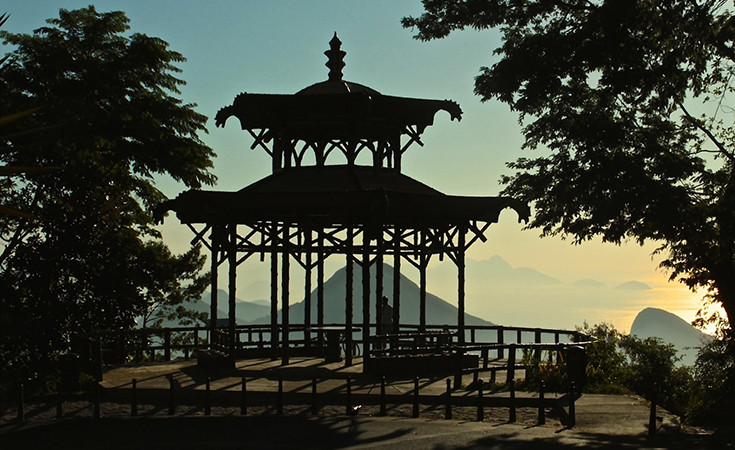
Vista Chinesa is an amazing place built in the early twentieth century, between 1902 and 1906. It was made with the aim of paying tribute to the Chinese culture and people in Brazil by growing and importing tea in the country. The creator of the work is the architect Luís Rey. His idea was to build a place, in the middle of a clearing, where one can enjoy the beautiful landscape that surrounds him.
The name "Vista Chinesa" comes from Chinese farmers brought to Rio de Janeiro in the first half of the 19th century. Initially, 100 Chinese people came from the Portuguese colony of Macao, who were imported by Count Linhares in 1812, with the aim of examining the suitability of Brazilian soil for growing tea. The settlers, who were chosen because they have a lot of experience on the subject, settled first on the slopes of the forest at the end of the Botanical Garden. There they planted 6.000 seedlings of tea, a plant that yielded three crops a year. Portugal has earned a considerable income from selling the tea. Even at that time, it was believed that Rio de Janeiro would be able to supply the whole Europe with tea, so the investments of the then Portugal were moving in that direction.
Various theories have developed as to why this project was abandoned, but the most realistic is that the King of Portugal realized that it was far more profitable for him to sell coffee, a product for which he had no competition in Europe at the time, and to buy tea from China and India, because the costs of growing tea in Brazil were much higher than the prices at which he obtained tea from the east.
The building is made of bamboo and cement, and reaches a height of 380 meters. This structure is called the Pagoda, which is the central pavilion of the space. From here, one of the best views of Rio de Janeiro is provided. The monument is the largest in Latin America. It was chosen as the best Chinese portal, outside of China. Vista Chinesa is part of the Tijuca Forest National Park.